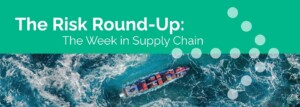
This clock is ticking for tariff negotiations with the U.S. ahead of an August 1 deadline
Japan, Indonesia, and the Philippines are among the most recent countries to strike trade deals. More could be coming soon, as we discuss in our Risk Center.
But among the breakthrough trade deals to date, some are perhaps most notable for their absence. The European Union is facing threats of a 30 percent tariff starting in August unless it guarantees an open market for American firms. Rather than go along, the E.U. may set 30 percent tariffs of its own on a list of goods that includes cars, aircraft, spare parts, and bourbon. Other potential ripples could touch everything from chemicals and plastics to medical devices.
Meanwhile, a third round of trade talks between the U.S. and China is set for early next week. There’s a lot to discuss, like export controls on rare earths, as well as Chinese purchases of sanctioned Russian and Iranian oil products. Complicating the picture still, new Chinese plans could further hinder electric vehicle battery manufacturing abroad, while the U.S. is considering banning connections with China’s undersea communication cables.
As the planet gets hotter, extreme weather is driving up food prices worldwide
New research from the Barcelona Supercomputer Center’s Maximilan Kotz and others in the U.K. and Germany shows how heat waves, droughts, and heavy rain events in recent years have all led to price spikes for food.
The examples range from a 50 percent increase in Mediterranean olive oil prices following a regional drought to steeper coffee and cocoa prices after extreme heat events in the tropics to higher vegetable prices everywhere from California to South Africa to Pakistan following all manner of extreme weather.
Another timely example might be matcha, as record high temperatures in Japan have been crimping supplies of the popular green tea. Coupled with surging demand, prices recently hit an all-time high.
And beyond the unhappy news for matcha lovers, the broader pattern suggests ominous ramifications: “Importantly, these climate-driven food price spikes can aggravate risks across a range of sectors,” the researchers say, including “destabilising monetary and political systems.”
The market for air cargo is not exactly flying high
In June, capacity grew faster than demand for the first time since 2023, while some rates have been sliding: The cost to fly a kilogram of cargo from Southeast Asia to North America is now under $5, down some 11 percent compared to this time last year. Many airfreight corridors also notched recent declines compared to a year ago.
Among the reasons, experts say, are weak consumer confidence, looming tariffs, and uncertain demand going forward.
“The air cargo market is losing altitude amidst so much uncertainty,” says Niall van de Wouw, Chief Airfreight Officer at Xeneta. “For consumers who were already under severe financial pressure from the rise in the everyday cost-of-living, the added cost of tariffs means they are more likely to think twice about buying many of the types of goods which are exported and imported by air.”
In other airline news, American Airlines has cancelled hundreds of flights to O’Hare airport in Chicago for August. American Airlines is not alone in this. United, JetBlue, and Avelo have all reduced the number of flights and routes from August.
For procurement teams, understanding supplier risk is a must
There’s no way to sidestep every potential disruption lurking in your supply chain, particularly down in the murky layers of sub-tier suppliers you might not know much about. But in this week’s blog post, we discuss how you can assess and monitor such risks and safeguard against them.
This approach, which we call risk-optimized procurement, helps you build operational resilience and better handle whatever disruptions arise—a major advantage over competitors caught flat-footed. The idea is to avoid the panic and expense of sourcing last-minute replacements and expediting shipping, to say nothing of the risk of blown deadlines, product quality falling short, and other potential complications.
Ultimately, you want to leverage key information like a given supplier’s financial stability, the extent to which you rely on and trust them, and their exposure to risks like wildfires, floods, and civil unrest. By building a digital twin of your supply chain, you can filter through and monitor emerging threats to mitigate risks before they become disruptions. Done right, this can not only drive savings but also optimize your supply chain for the future. The list of potential disruptions, after all, isn’t getting shorter.
You can’t spell “giant retail supply chain” without AI
Walmart says it’s developed an AI-driven system called “Trend-to-Product” that translates social media trends into product concepts, then feeds the results directly into prototypes and sourcing processes. The upshot, Walmart says, is that “projects that once took months can now be completed in weeks.”
That’s per a writeup in Fortune delving into how Walmart and its rivals like Amazon are exploring AI’s role in revamping their supply chains. Manish Kapoor, founder and CEO of Growth Catalyst Group, says such systems keep evolving; while once largely reactive, they can now reroute shipments when needed, and rebalance inventory across locations, among other functions.
For the grocery chain Albertsons, new models help match the volume of incoming shipments with available labor, in order to minimize both delays and overstaffing. The result, one Albertsons analyst says, is that products now get from the loading deck to store shelves about 15 percent faster at peak times.
